Welding is an exciting and challenging job. In addition to manual dexterity, welders need extensive knowledge when it comes to choosing the right filler metals, welding parameters, clamping devices and welding sequences. Demanding and well-paid, this profession is both interesting and varied, but it also involves risks, especially if welders fail to protect themselves adequately during manual welding.
Danger of Arc Radiation!
In arc welding, the air between the electrode and the workpiece is ionized by applying an electrical voltage. This creates plasma. It has a temperature of several thousand degrees and emits radiation of varying wavelengths. In addition to visible light, this produces infrared radiation and ultraviolet radiation, both of which are hazardous to health.
Visible Light
Causes visual glare. In the electromagnetic spectrum, light occurs in the wavelength range from 400 to 750 nm. Infrared Radiation
Infrared Radiation
This is in the wavelength range from 750 to 1,000 nm and is felt as heat radiation. If the skin is exposed to infrared rays for an extended period of time, there is a risk of burns. There is also a risk of damage to eyes. Short-wave IR radiation can cause clouding of the lens of the eye (cataract); long-wave radiation can burn the cornea.
Ultraviolet Radiation
UV radiation is invisible to humans. We need small amounts of UV to produce vitamin D, however excessive exposure is harmful. During welding, it causes “flashing” to the eyes and can lead to conjunctivitis. If areas of the skin are unprotected, short-term exposure to high doses will cause sunburn. Long-term high doses can lead to skin cancer and cataracts.
UV radiation is divided into three categories, depending on the wavelength:
- UV-A radiation (320–380 nm) penetrates deep into the skin. It causes tanning and premature aging of the skin.
- UV-B radiation (280–320 nm) penetrates the uppermost layers of the skin. It causes sunburn and poses a high cancer risk.
- UV-C radiation (100–280 nm) has shorter wavelengths and higher energy than UV-A and UV-B radiation. The natural UV-C rays, emitted by the sun, are largely absorbed by the earth’s atmosphere. They do not reach the earth’s surface and are therefore harmless to humans. However, when generated artificially, for example during welding, they can cause sunburn and skin tumors.
How You Can Effectively Protect Yourself against UV/IR Radiation
For effective protection, it is necessary to protect the entire body from arc radiation. The basic principle behind health and safety at work is that of eliminating hazards at source. If this is not sufficient or not at all possible, the STOP principle provides guidance. It outlines the order of priority given to the individual protective measures, known as the hierarchy of measures. It is one of the most important cornerstones of current occupational health and safety legislation. Personal measures such as the use of personal protective equipment (PPE) are always the last resort.
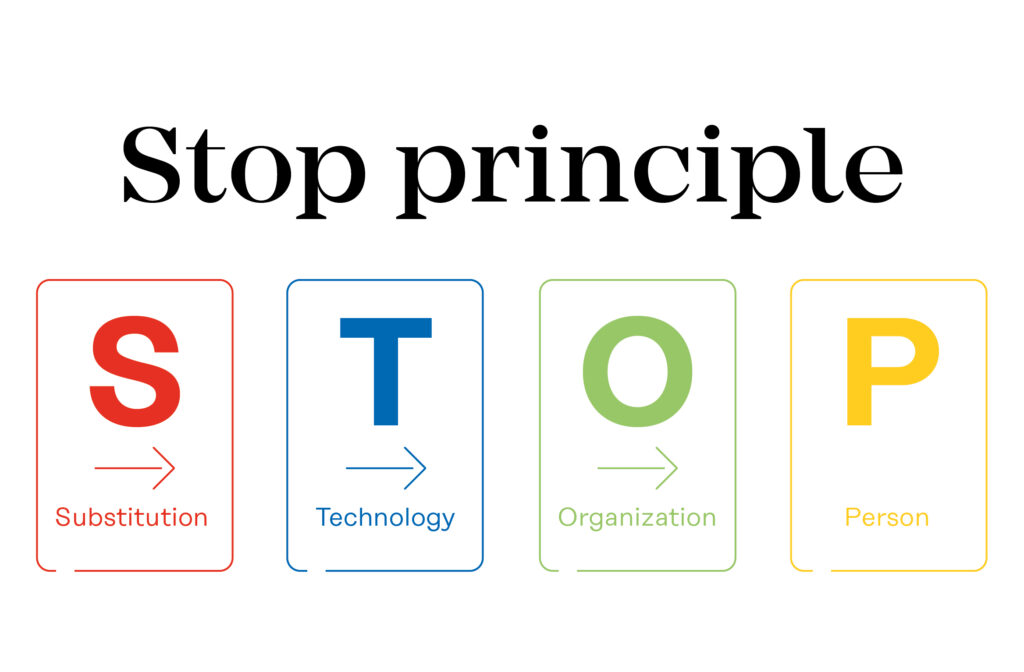
Substitute Measures
Choose Another Welding Process
In special cases, it is possible to replace arc welding with other processes, which either do not use an arc or provide a cover for it.
Technical Measures
Shield the Danger
The best way to shield the arc during automated welding is in welding cells. These systems are equipped with enclosures that keep 100% of the arc radiation away from the welding personnel.
It is of course equally important to protect people in the vicinity of welding work from reflections and glare. That is why every welding workplace must be equipped with visual screening, for example in the form of red lamellar welding curtains. Such curtains absorb a large part of the radiation and, depending on the degree of coloration, even allow visual contact.
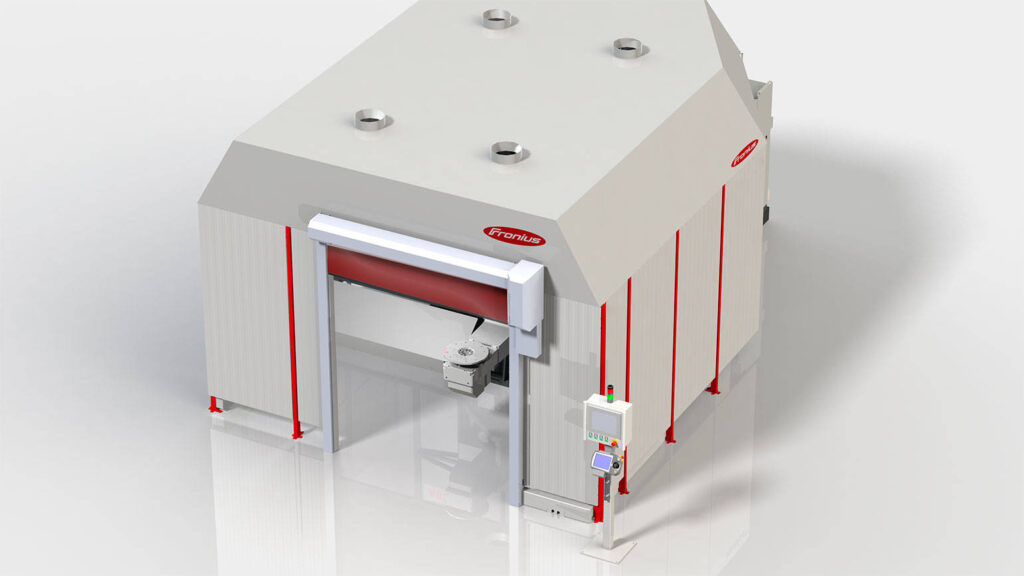
Some may not be aware of the fact that the walls of welding workplaces should not be light-colored or shiny. White walls strongly reflect arc radiation and are therefore completely unsuitable.
Organizational Measures
Limit Exposure to a Hazard
Even short arc times pose a hazard to the human eye, so speeding up welding in order to protect the eyes is, in effect, pointless. Nevertheless, this would decrease the exposure time to welding fumes, thereby reducing the health risk to welders.
Personal Measures
Use Personal Protective Equipment
Besides completely shielding the arc (e.g. through cobot welding cells), using PPE is the most suitable measure to effectively protect yourself from arc radiation. Personal protective equipment against UV/IR radiation usually consists of welding helmets, protective goggles, welding apparel and protective gloves.
Welding Helmets
They protect the eyes from harmful rays and prevent eye conditions such as cataracts or conjunctivitis. They are available in various designs that protect not only the face, but also the head and neck. Depending on the type of welding and the protection requirements, you can find a variety of welding helmets on the market.
Passive welding helmets have a built-in protective filter that protects against radiation. With these helmets, it is not possible to adjust the level of darkening, so users have to lift the helmet before and after welding.
Automatic welding helmets feature an automatic darkening system that activates the protective filter at the start of the welding process, providing protection against glare. The darkening takes place within fractions of a second and is usually seamlessly adjustable.
Some of these high-quality helmets incorporate special UV/IR filters that use specialized technologies to block all harmful rays while allowing the harmless visible light to pass through with the best possible transmission. This results in a highly detailed color reproduction that even allows users to see the melting process, ensuring the highest possible welding performance.
The latest generation of innovative helmets are equipped with Bluetooth® technology. They activate immediately before the arc is ignited, at the welding system’s command.
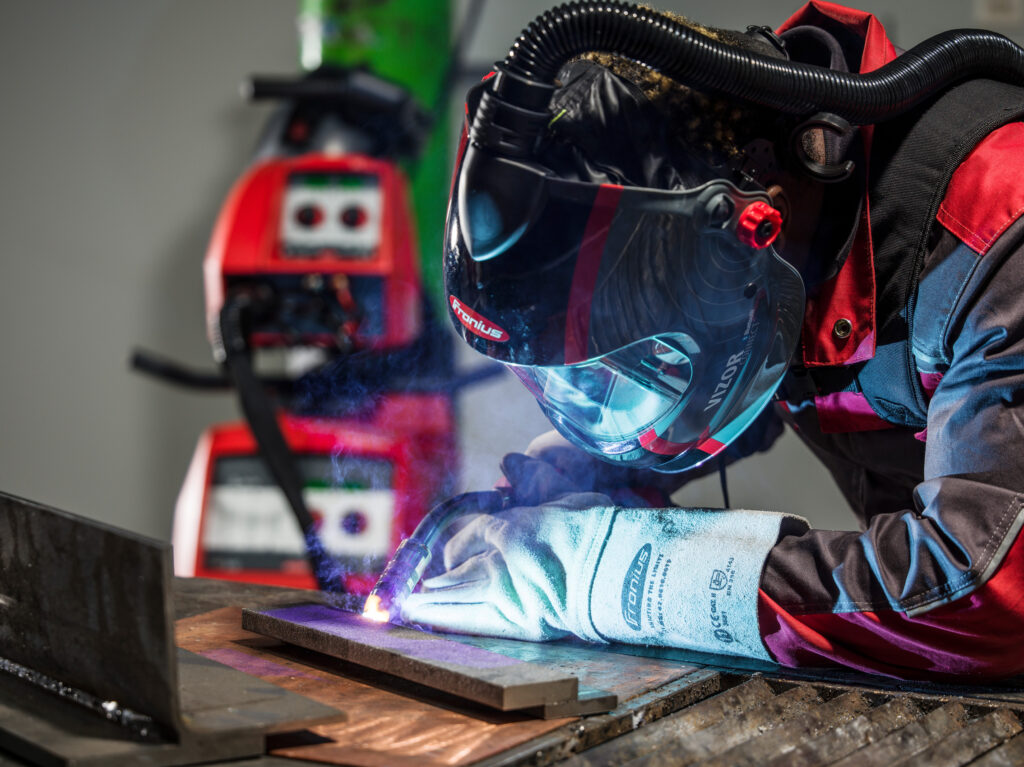
All in all, welding helmets provide vital protection against glare, radiation and flying sparks.
Safety Goggles
They have special lenses that protect against intense radiation and glare. They come in various levels of protection, as indicated on the glass. Some goggles feature side protection against flying sparks and welding spatter.
Welding Apparel and Protective Gloves
Providing adequate protection for human skin against welding spatter and UV radiation, these are a must for welders! They are available in various designs, ranging from lightweight functional fabrics to high-quality jackets and gloves made of leather. Hoods, headscarves, masks, welding sleeves and aprons complete the extensive range.
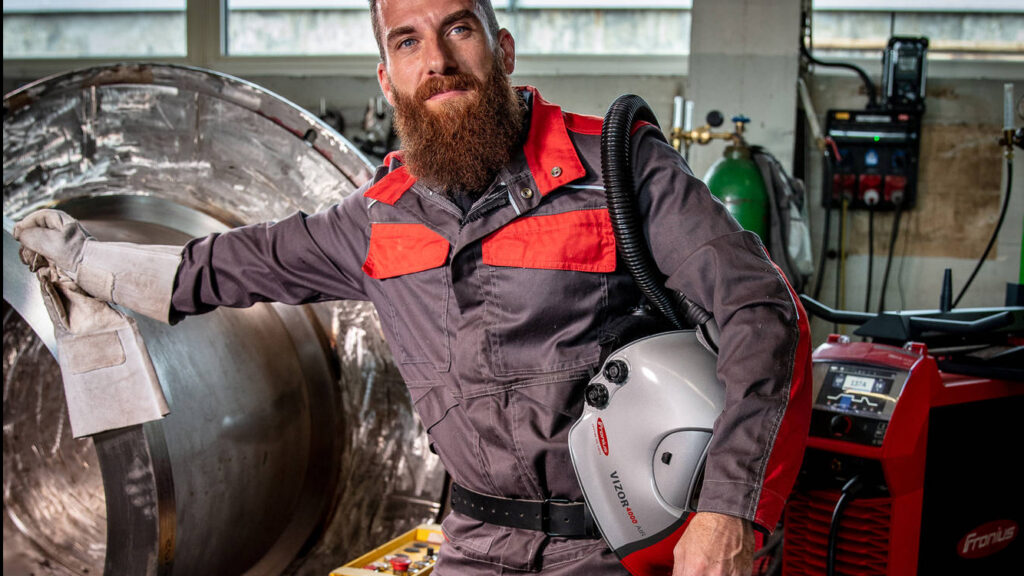
In addition to arc radiation, welding also entails other risks that require protection. What are they? Take a look at our website and find out for yourself. To learn about different accidents caused by a lack of protection and how the topics of health and safety have changed over the years, read our interview with a welding technologist and application engineer who has worked in the industry for many years.
 Perfect Welding Blog
Perfect Welding Blog
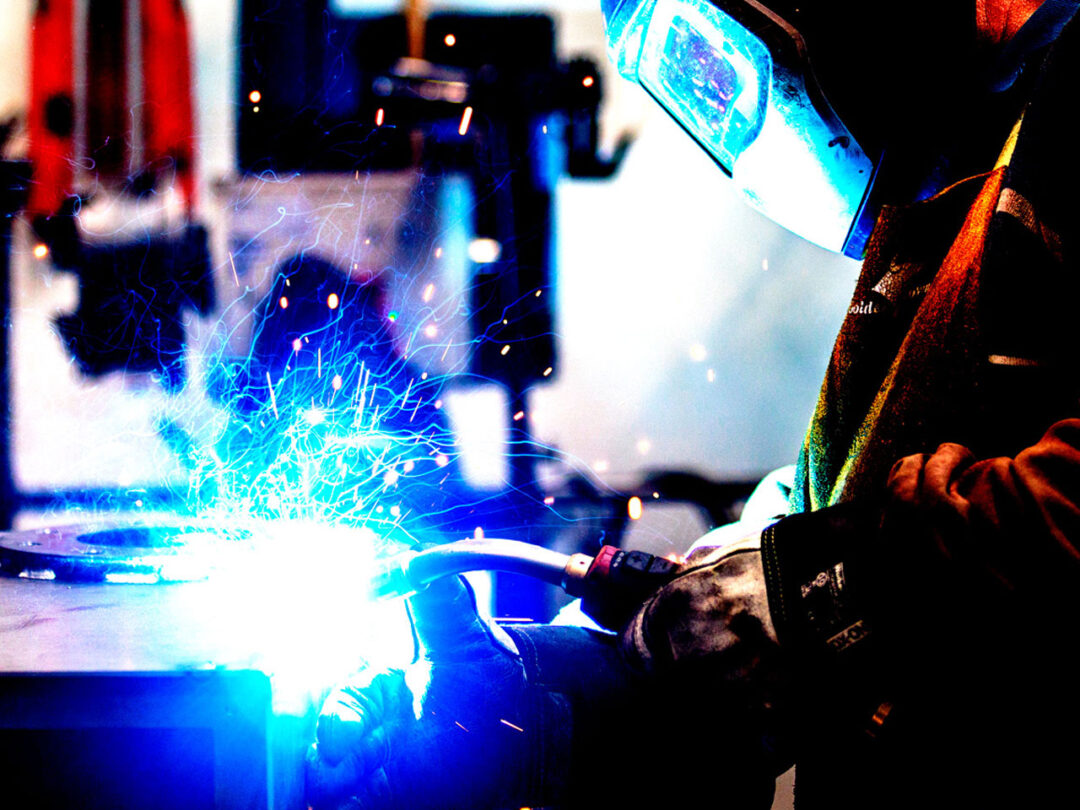
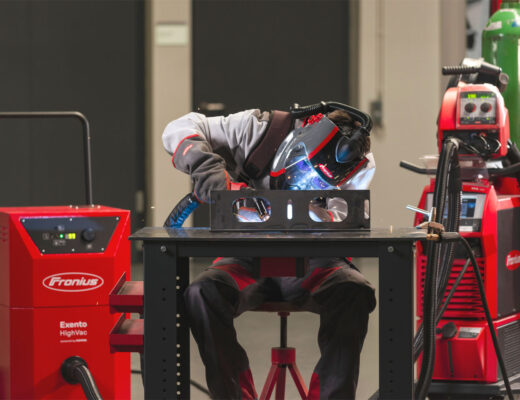
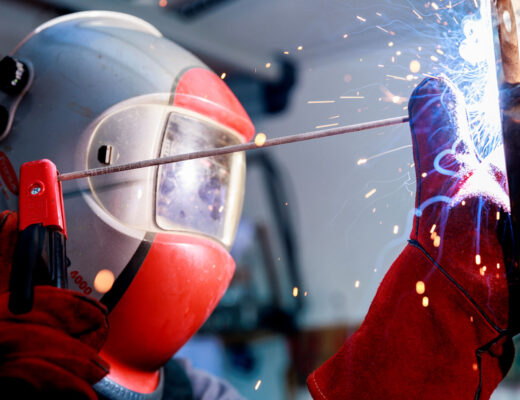

No Comments